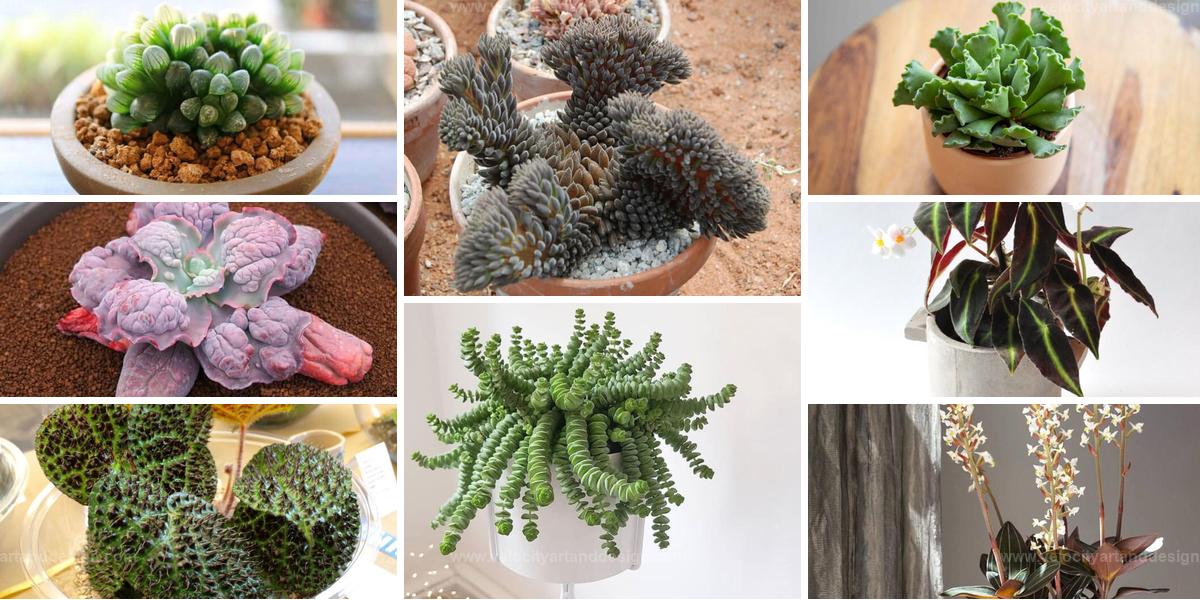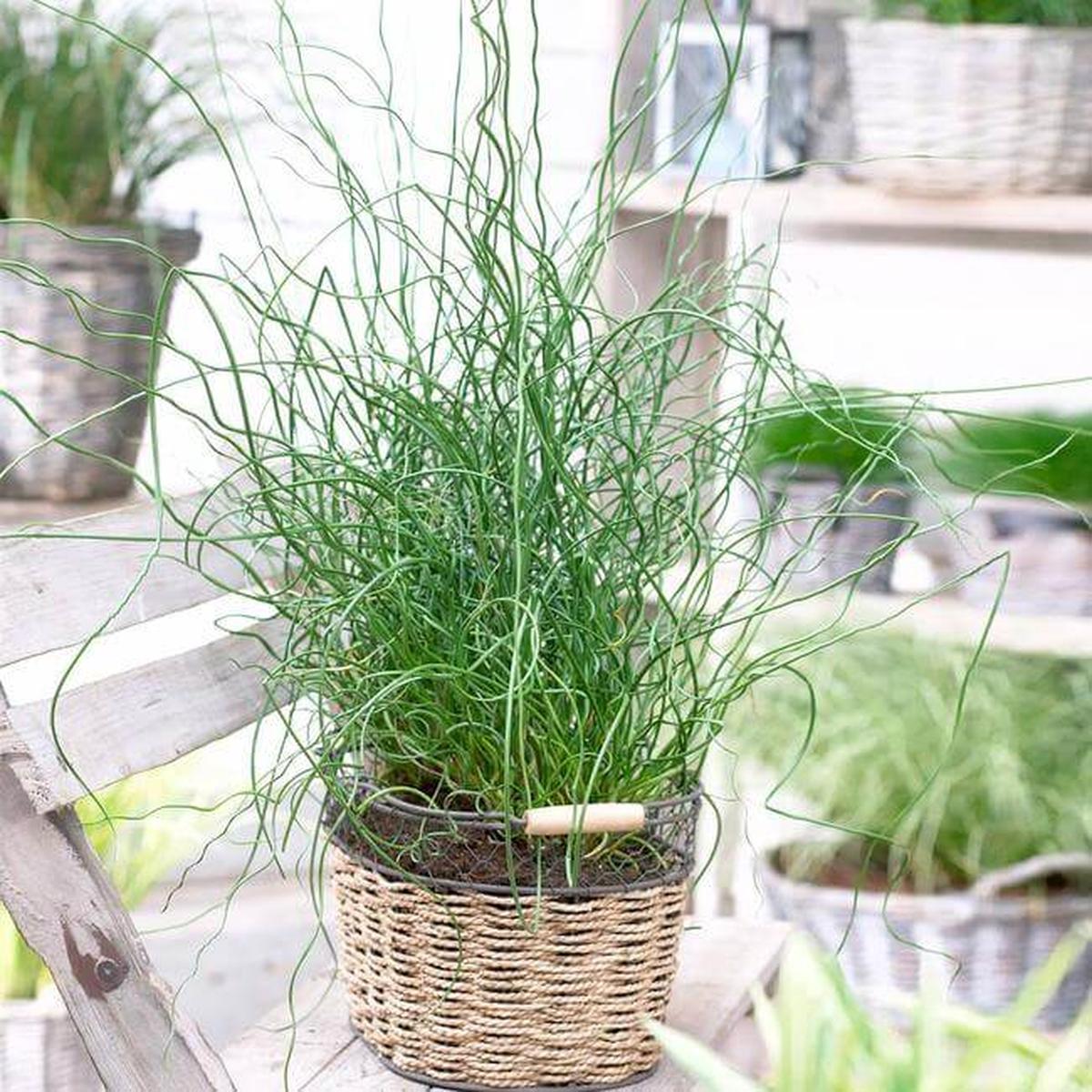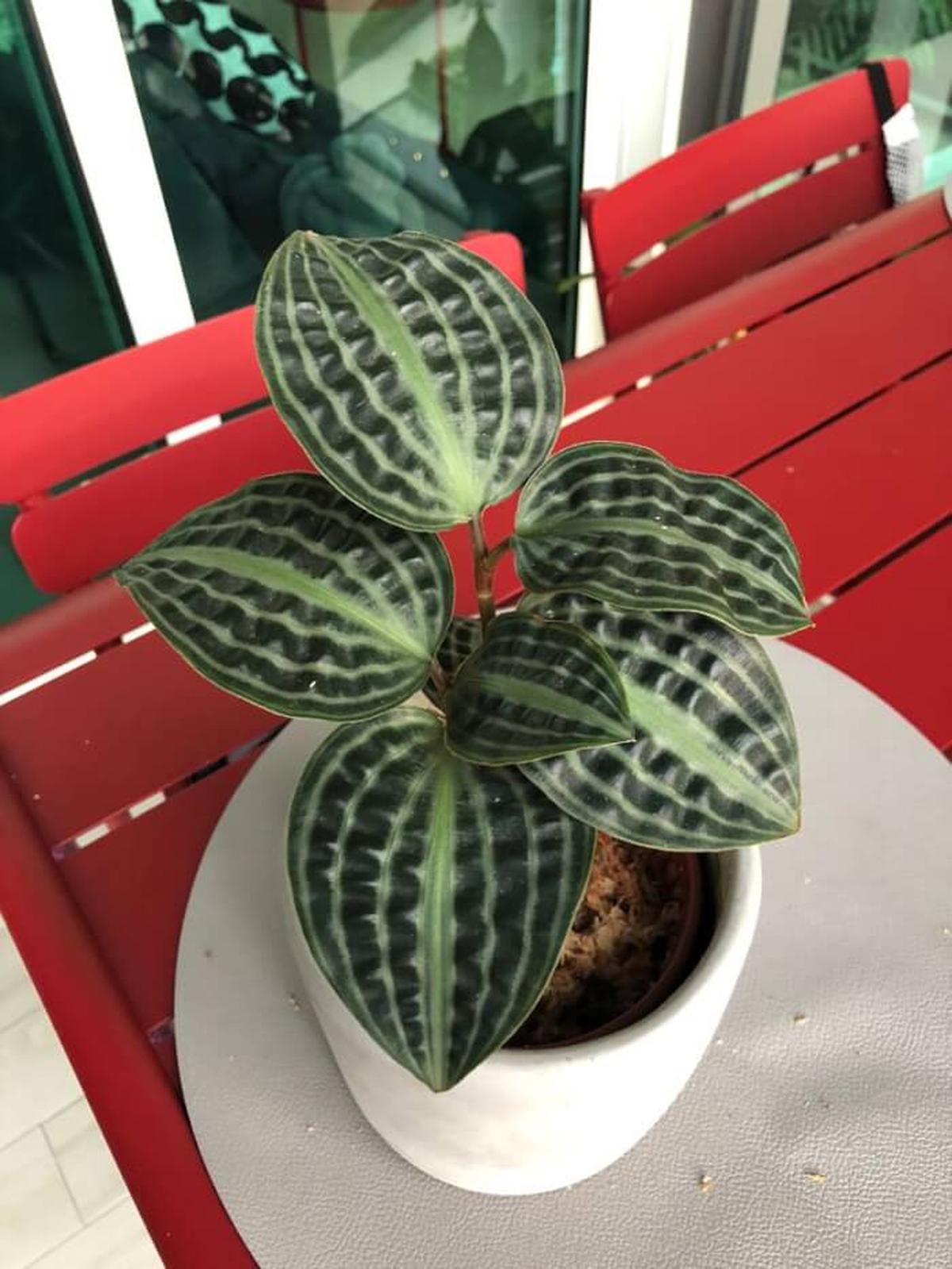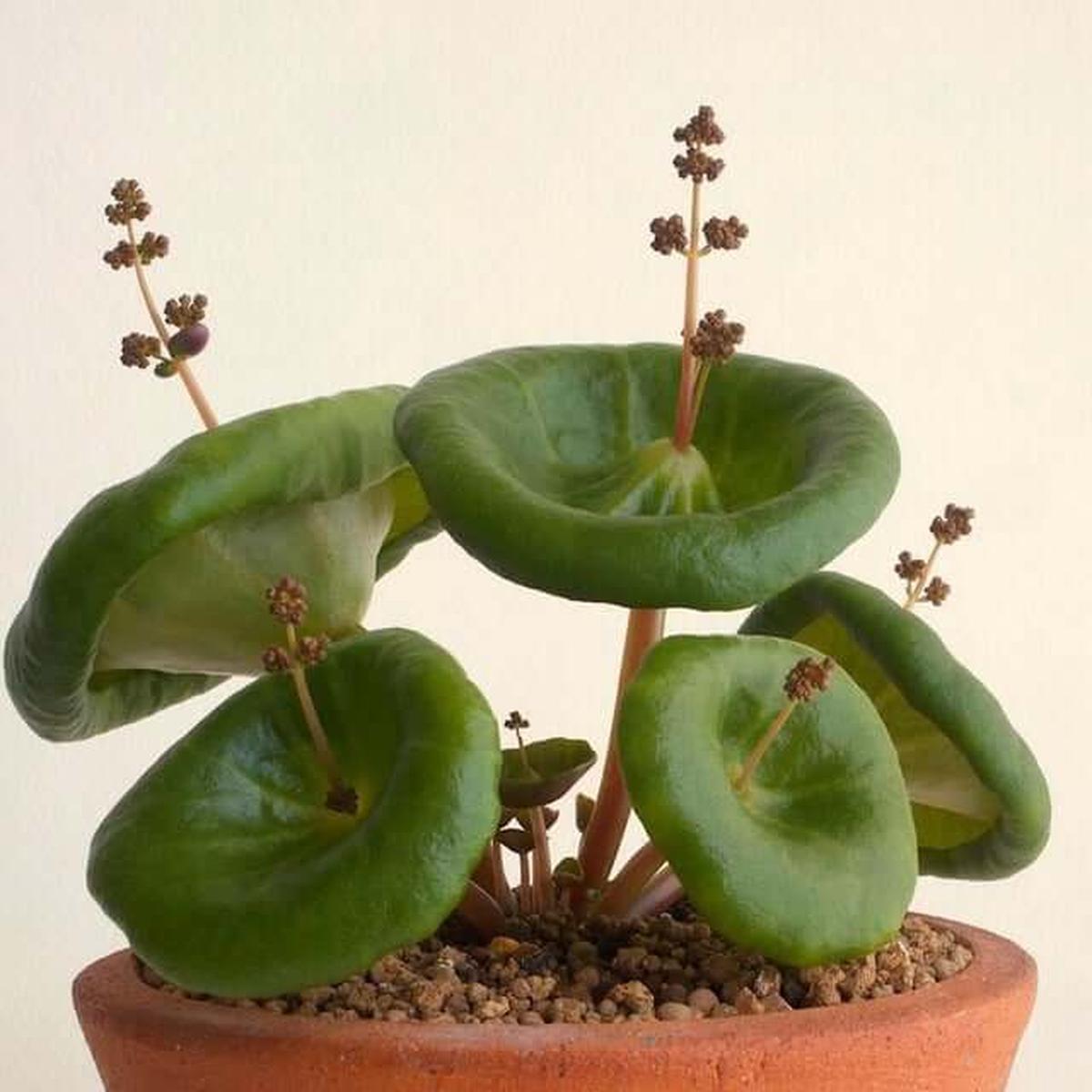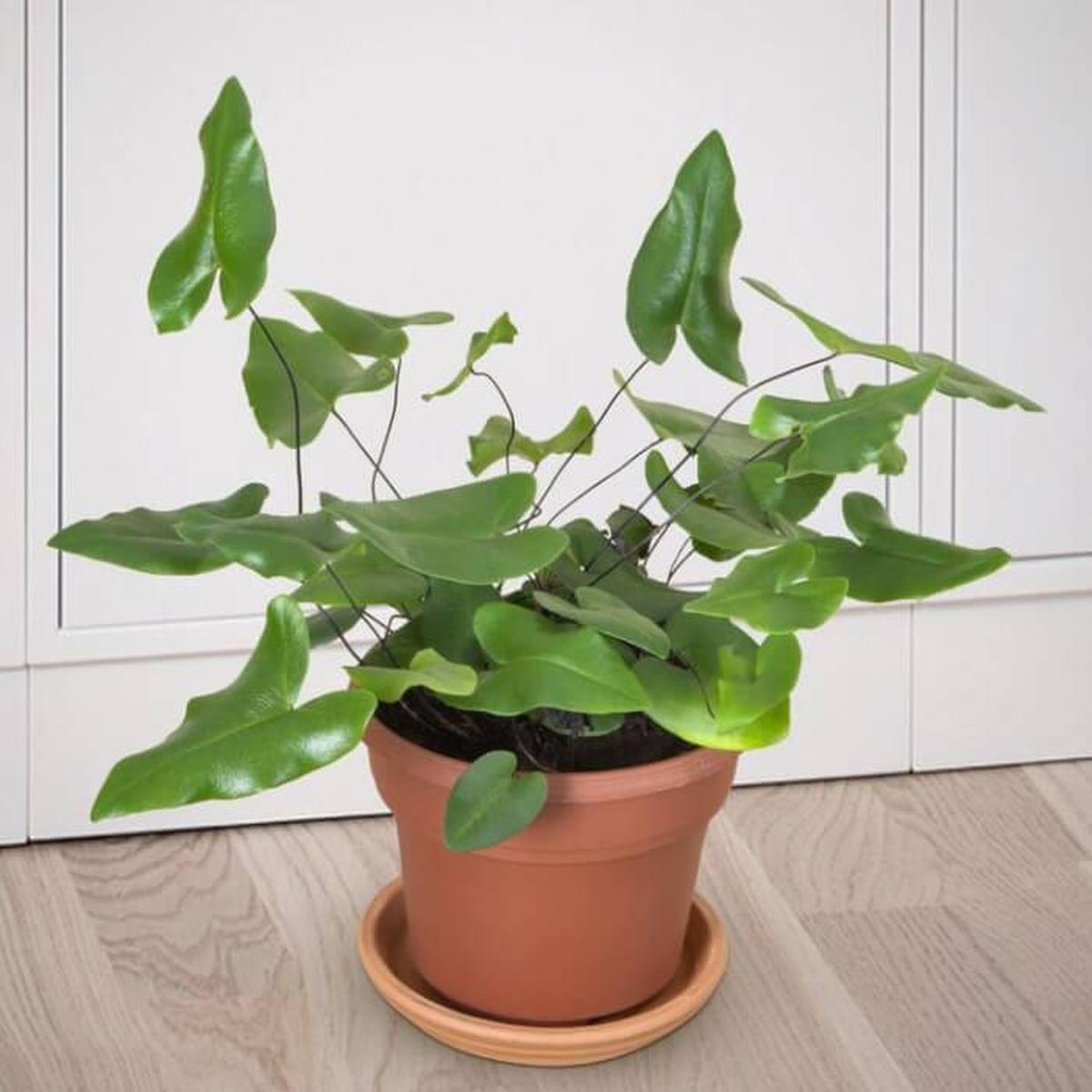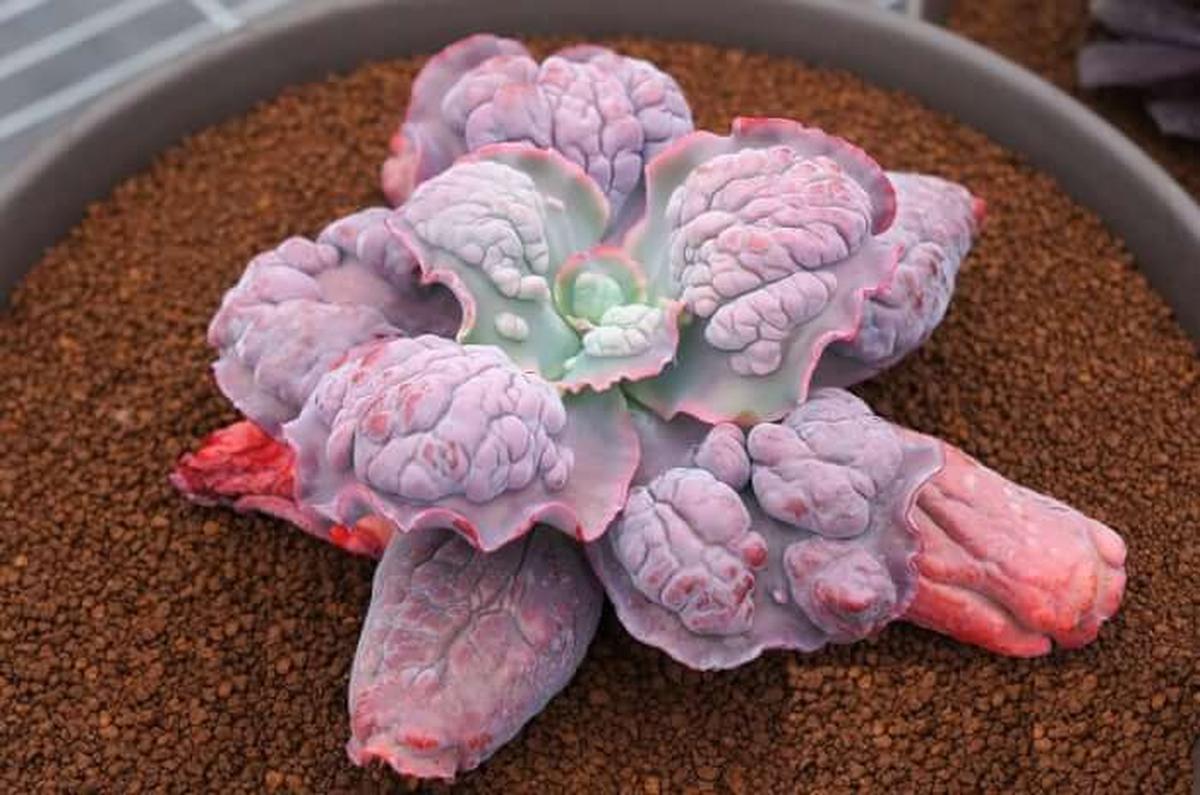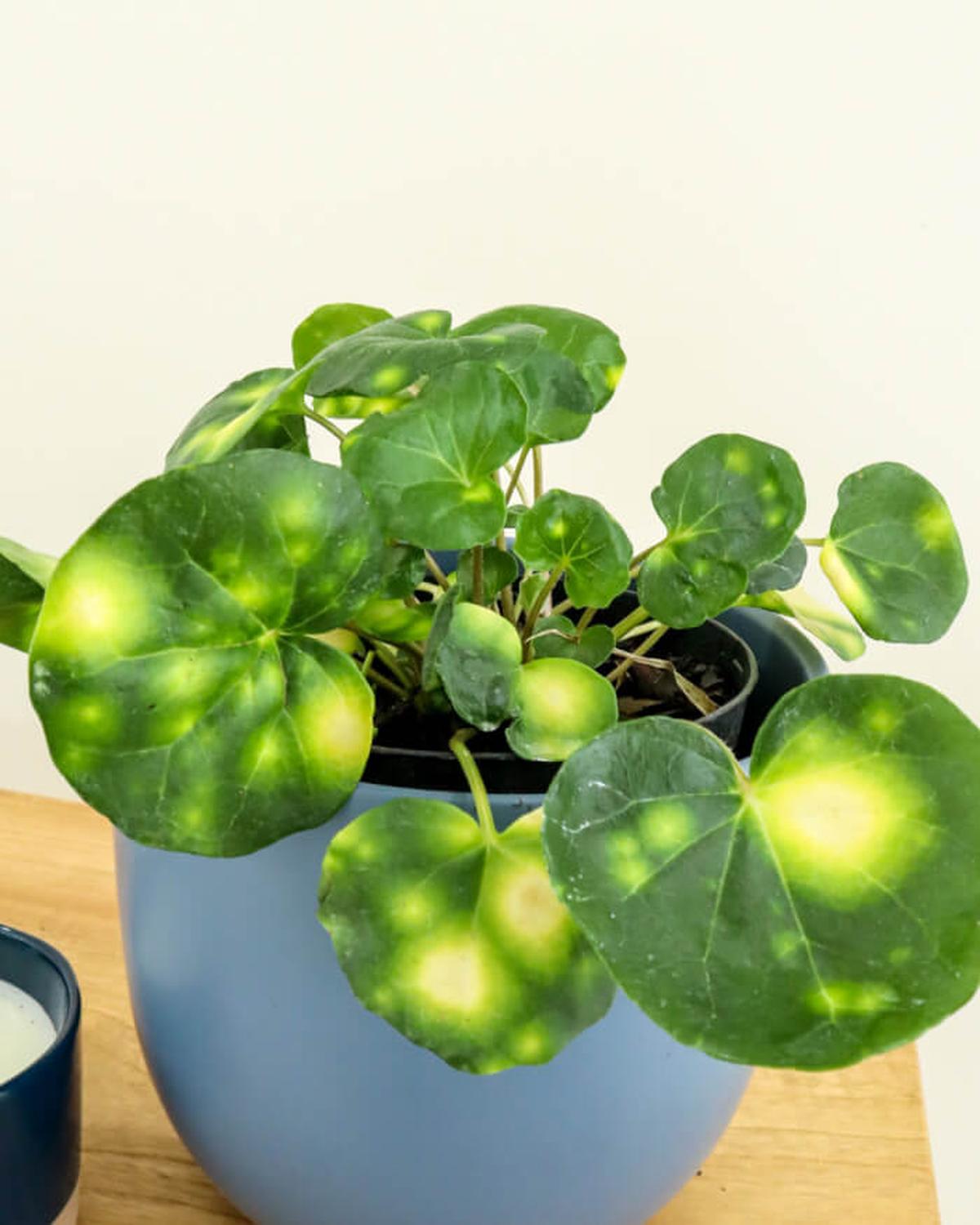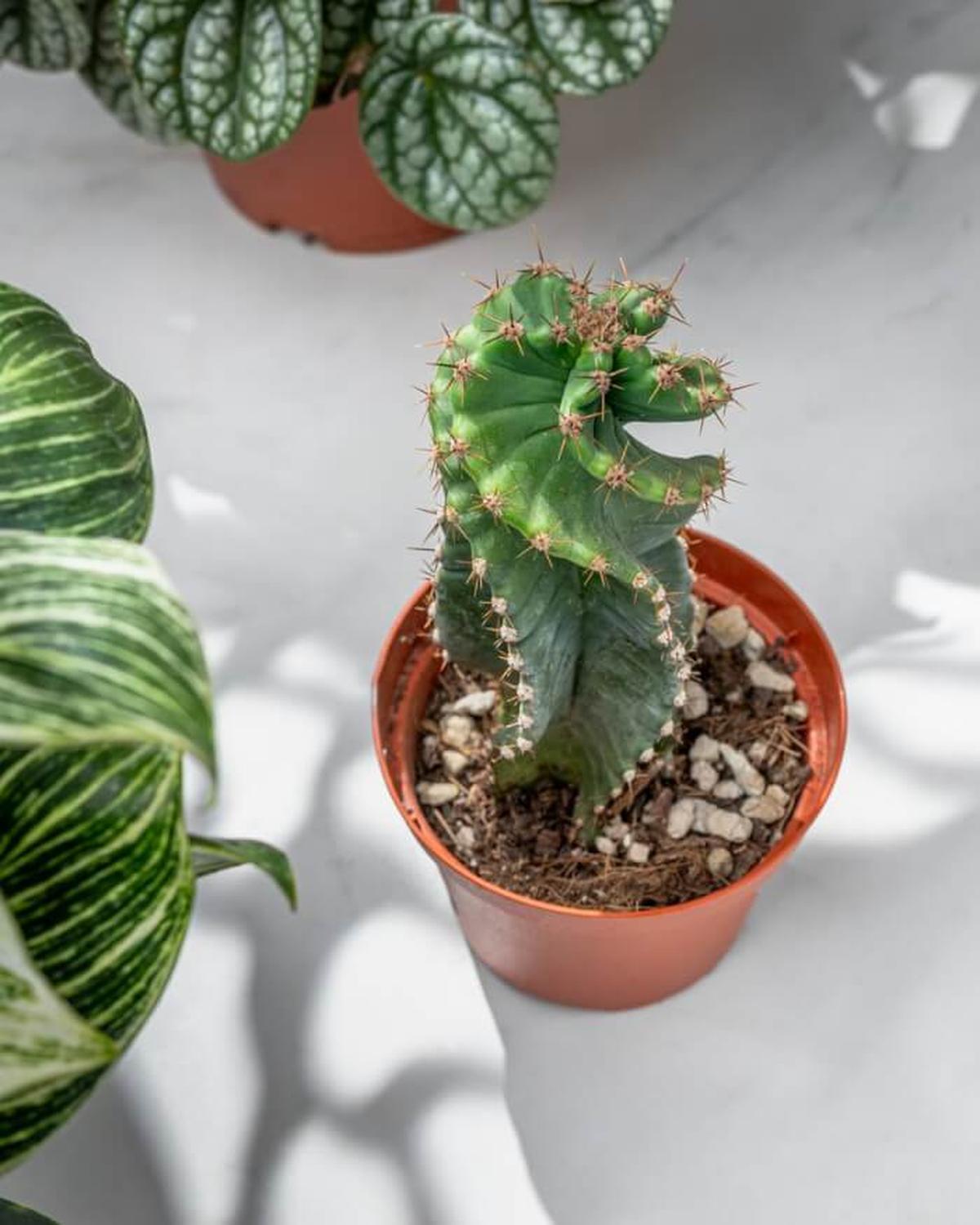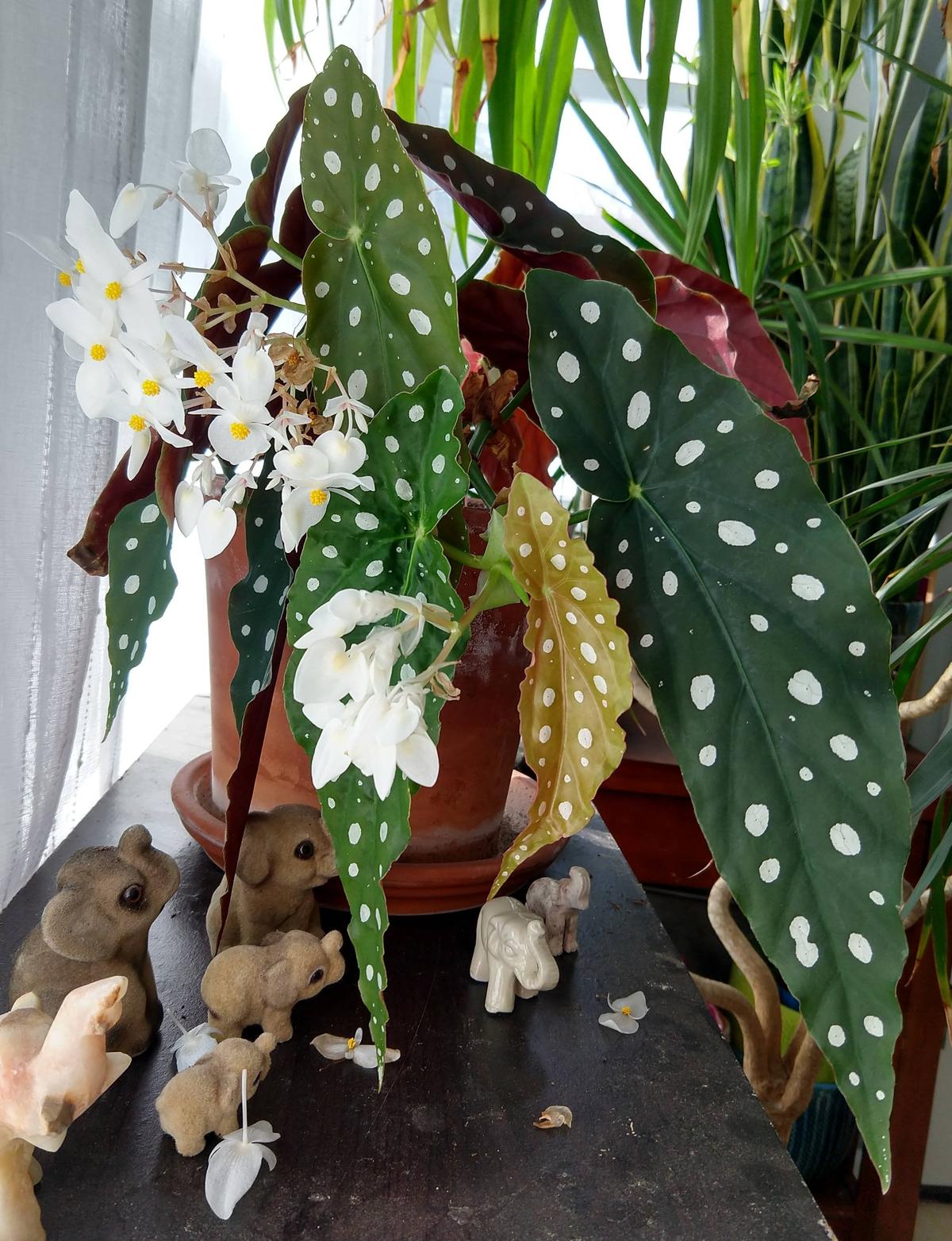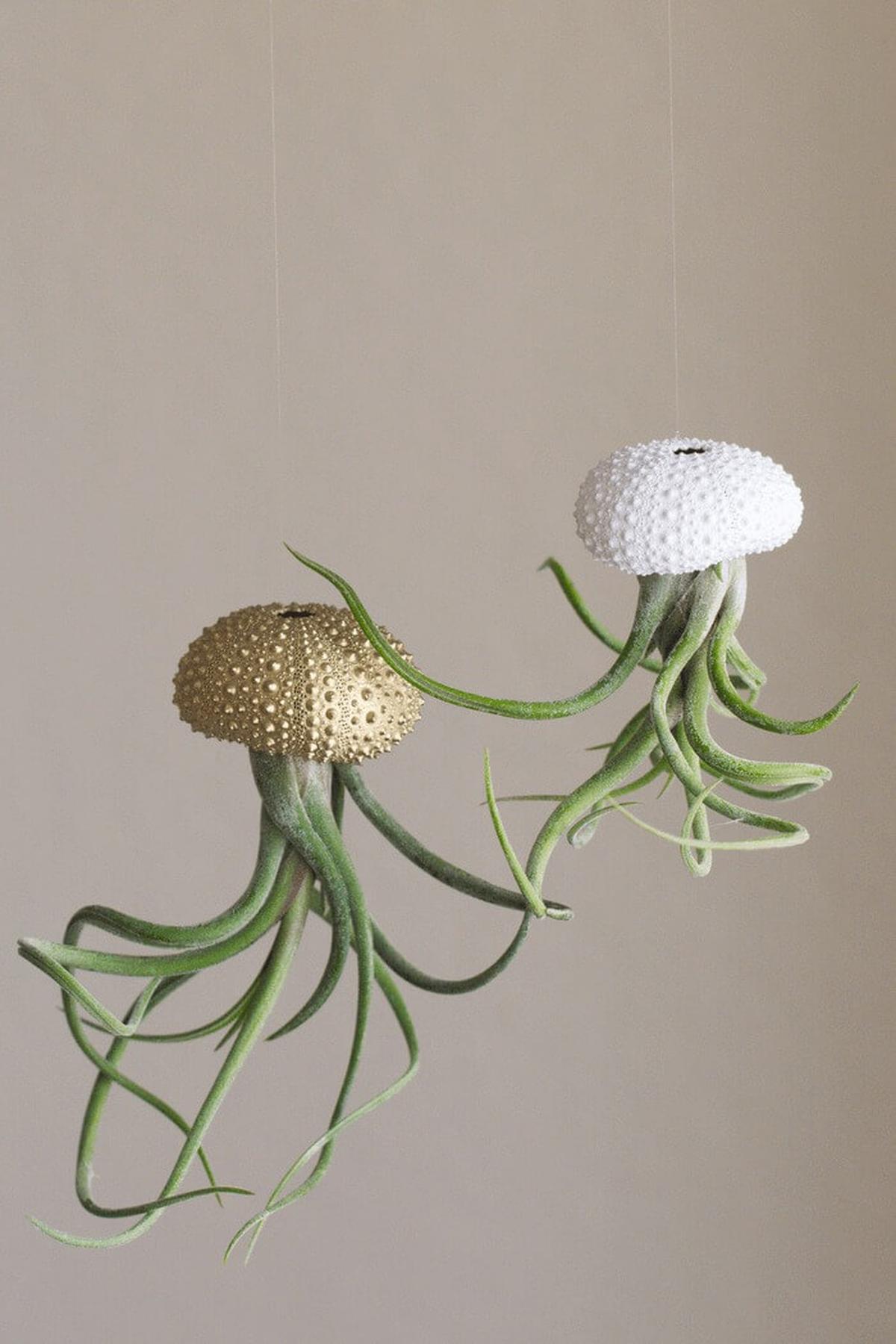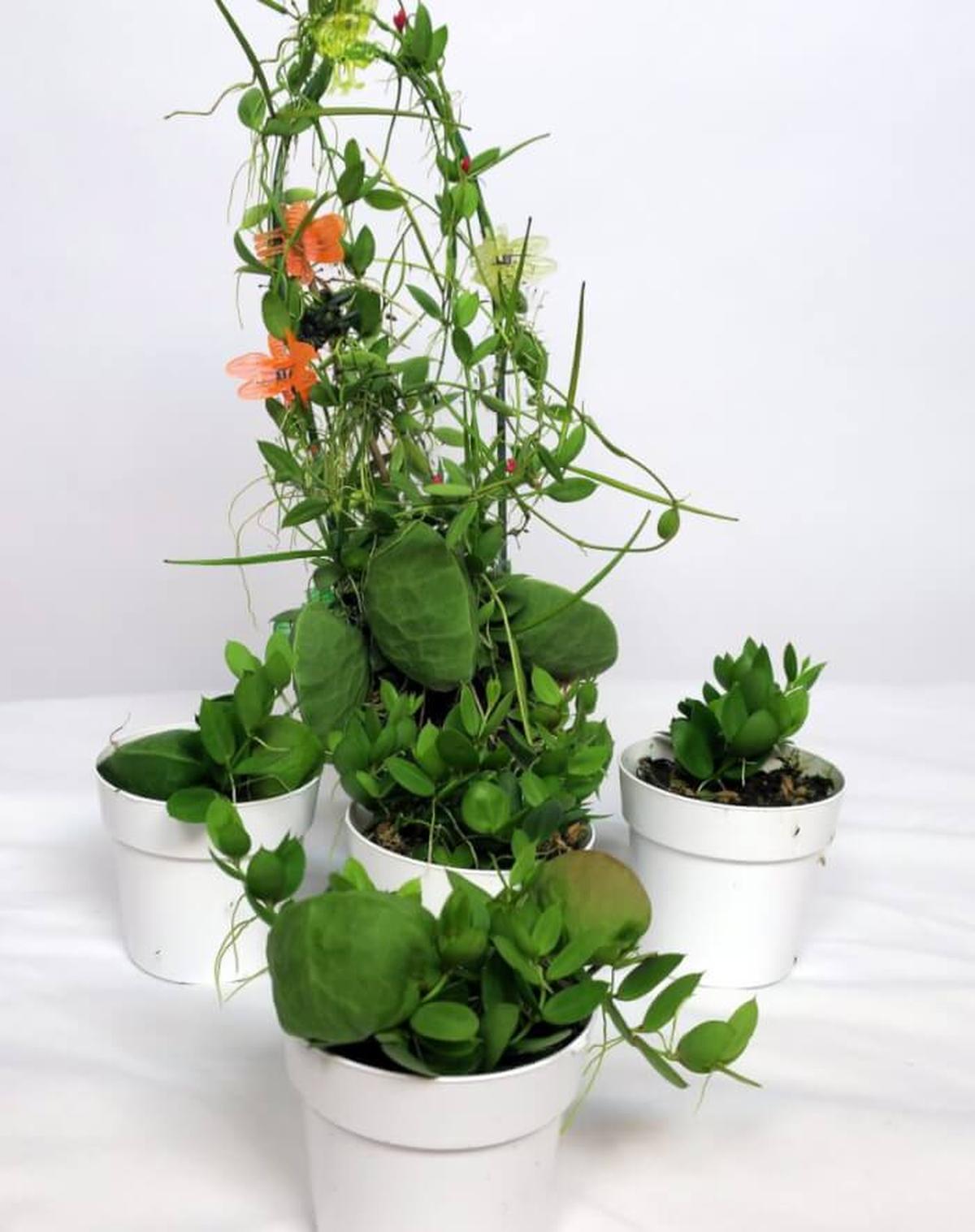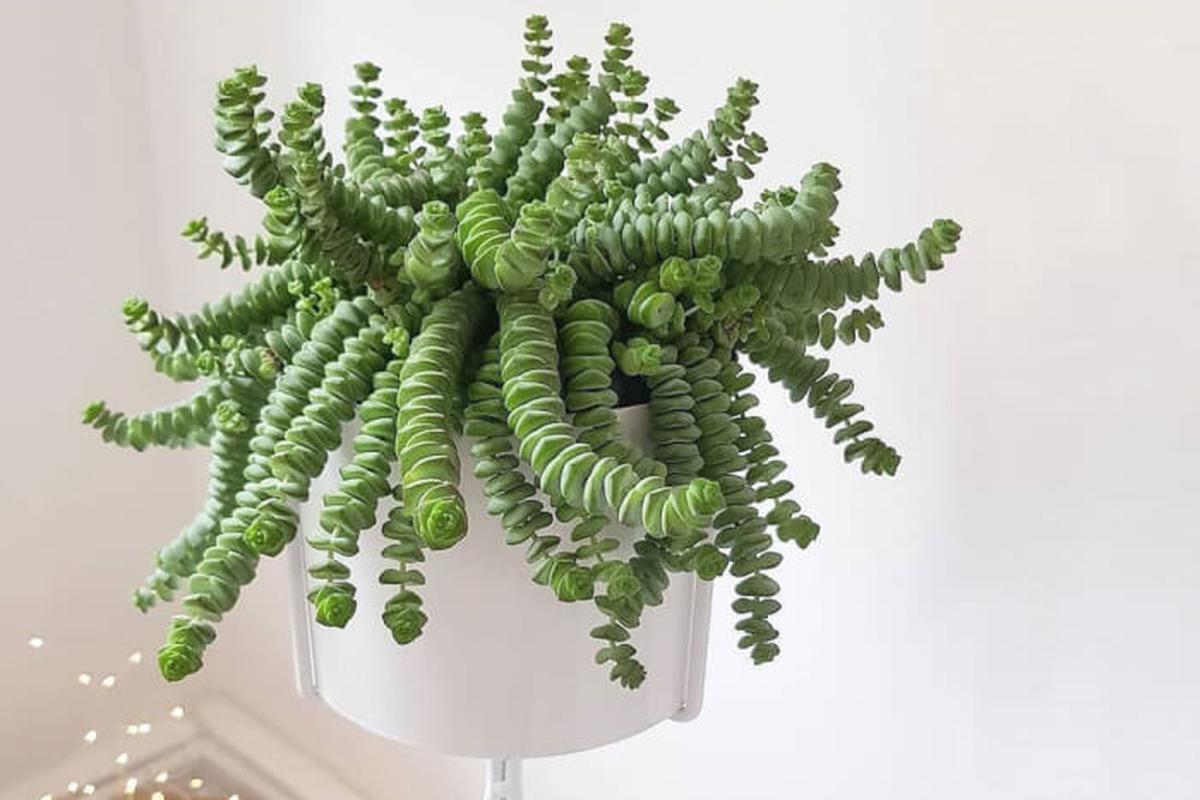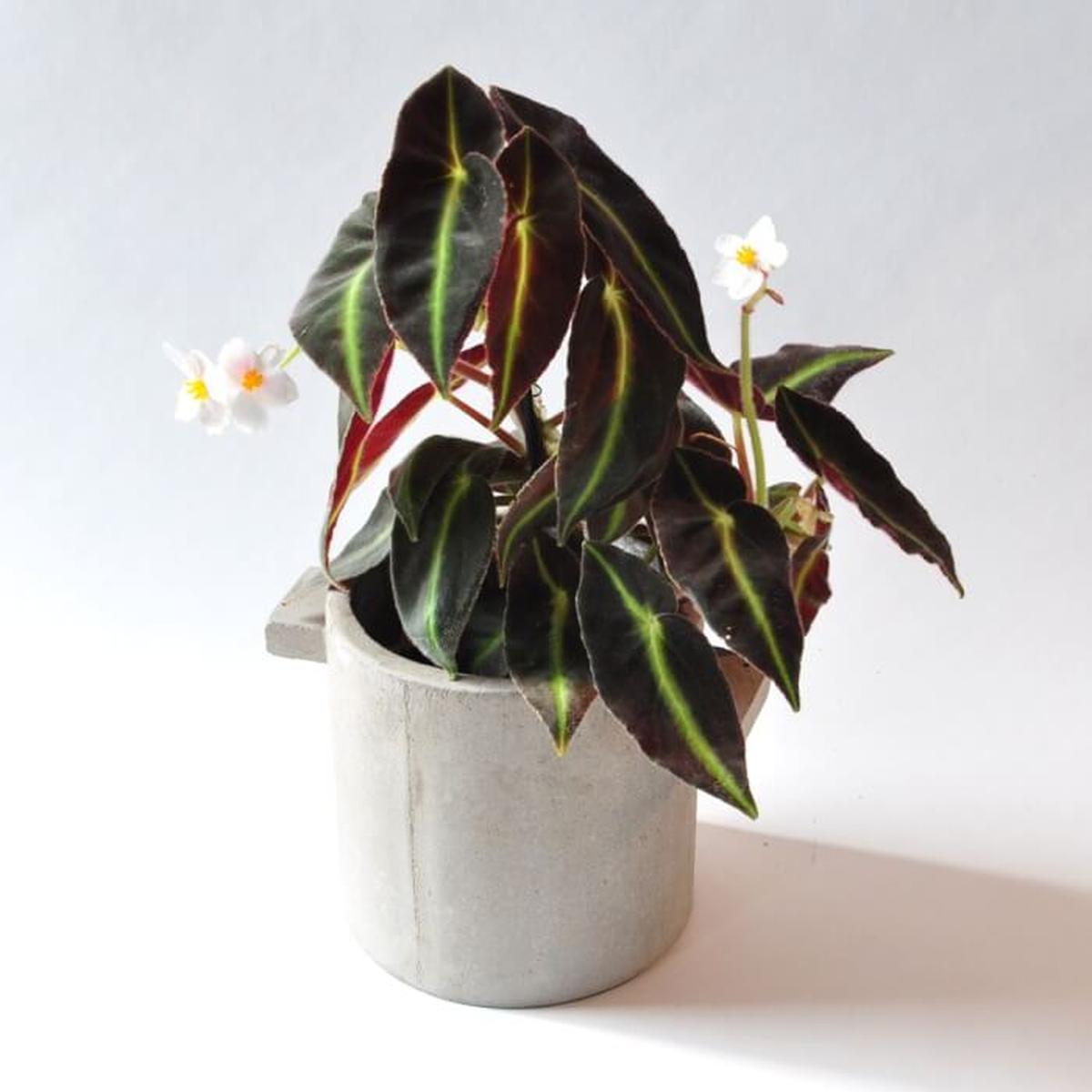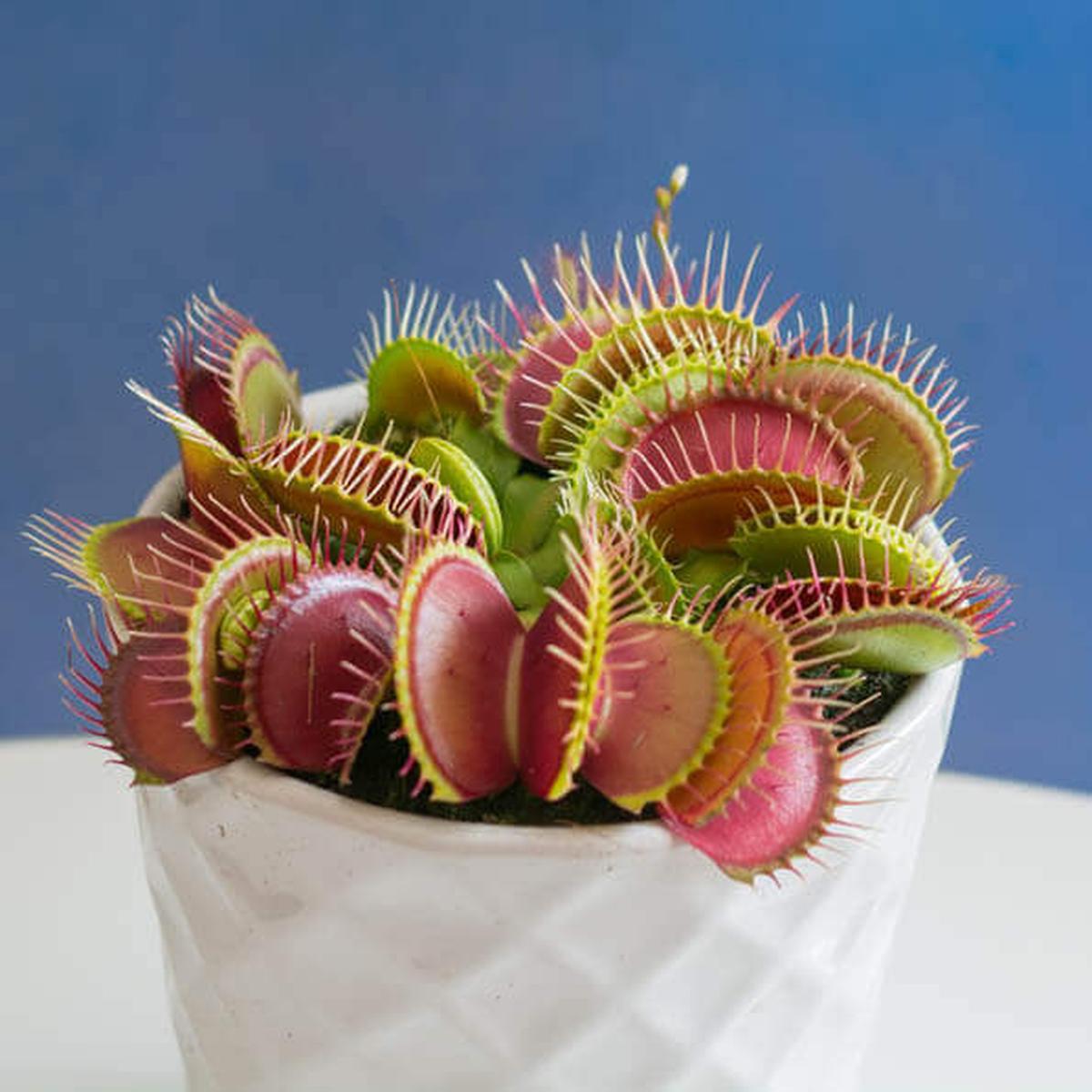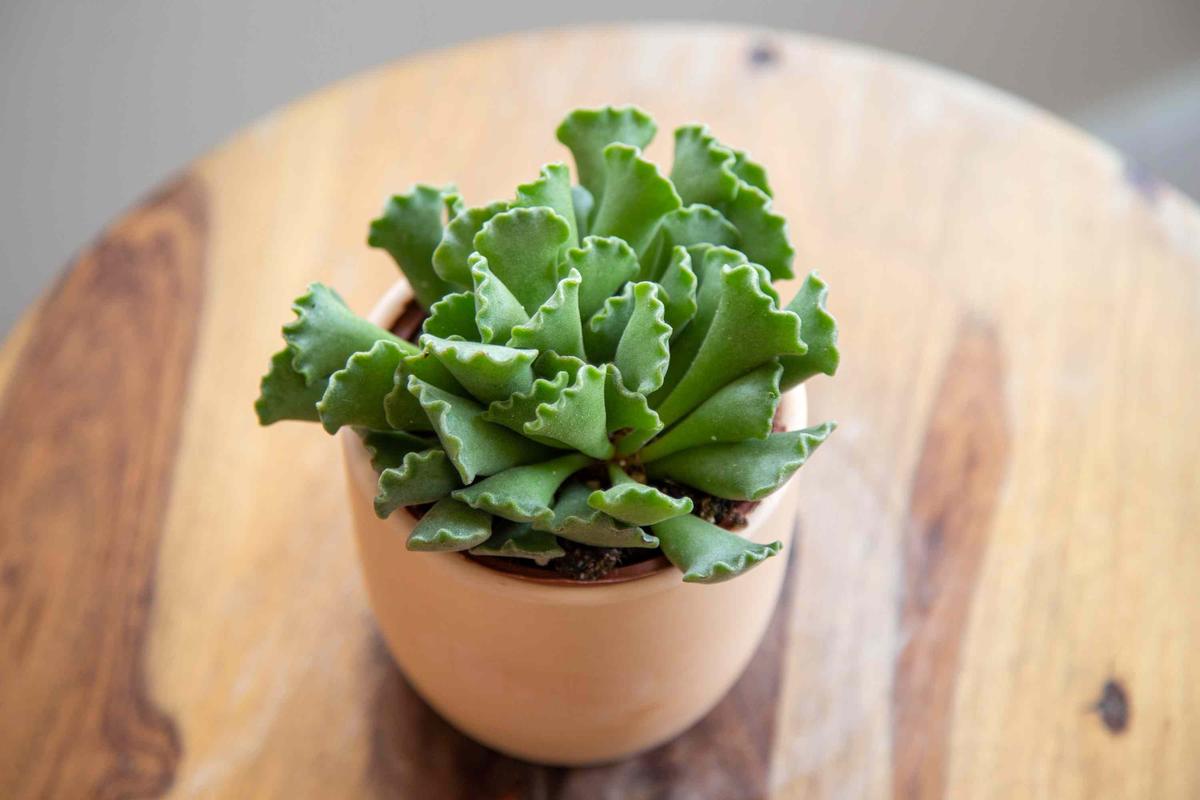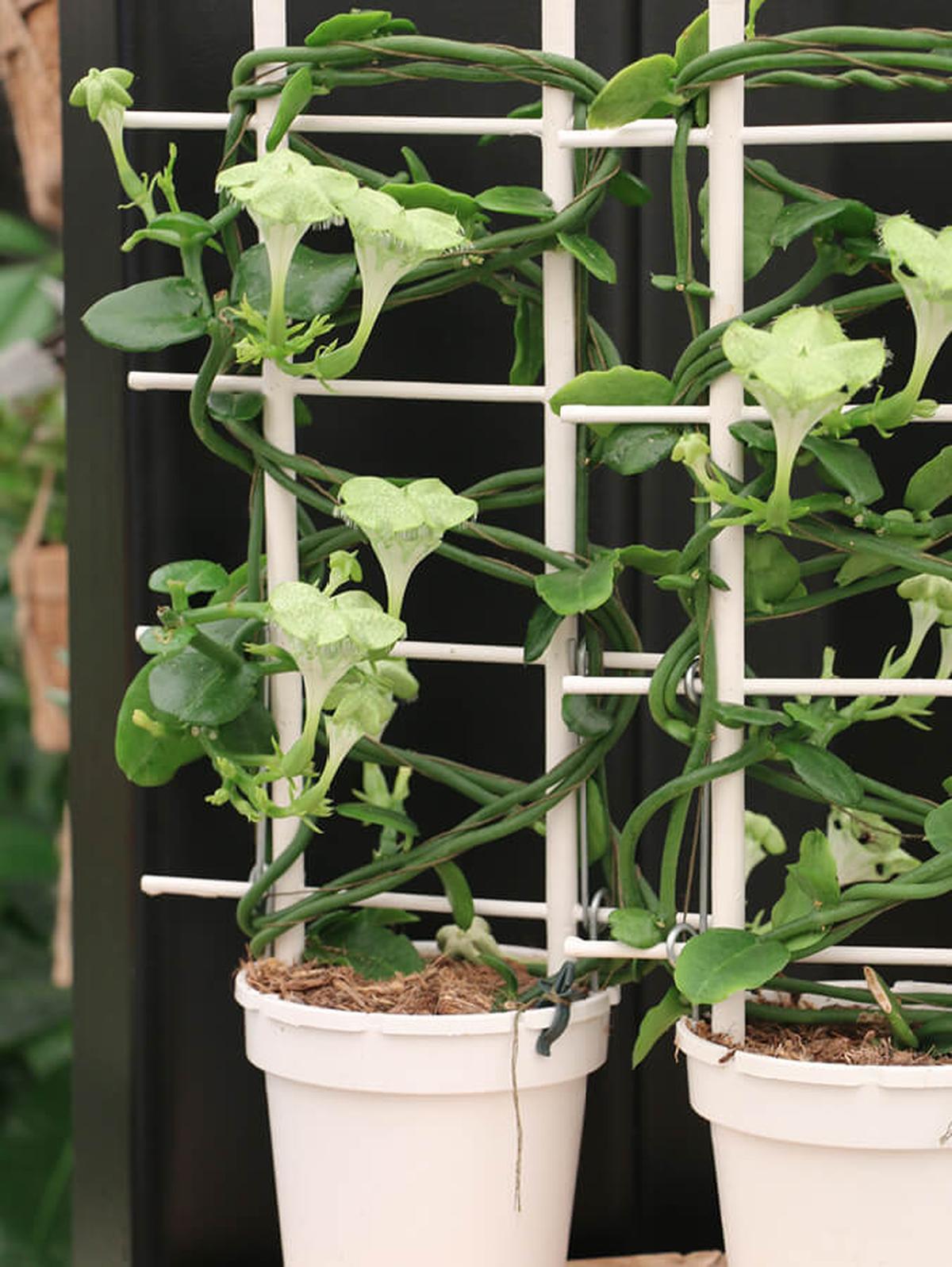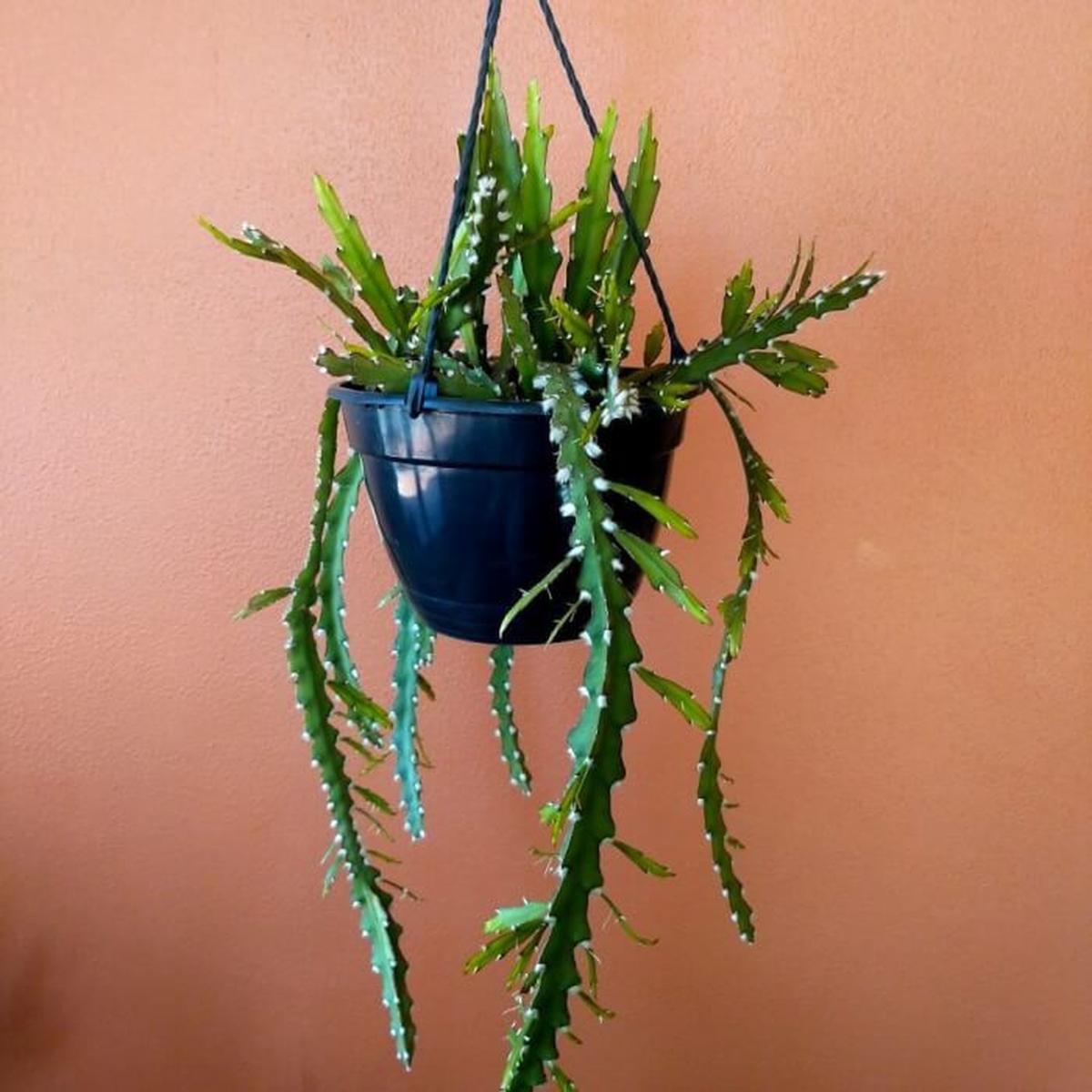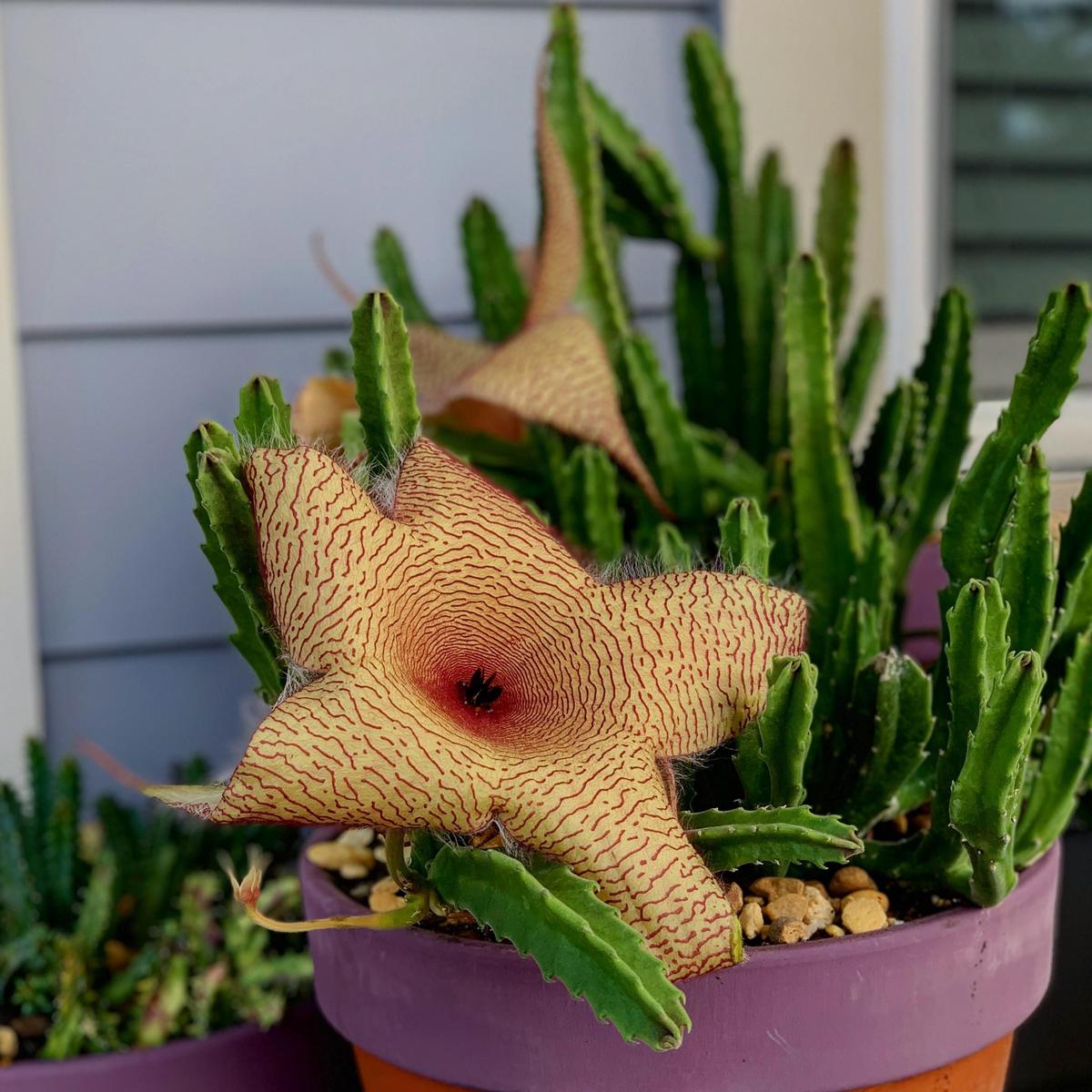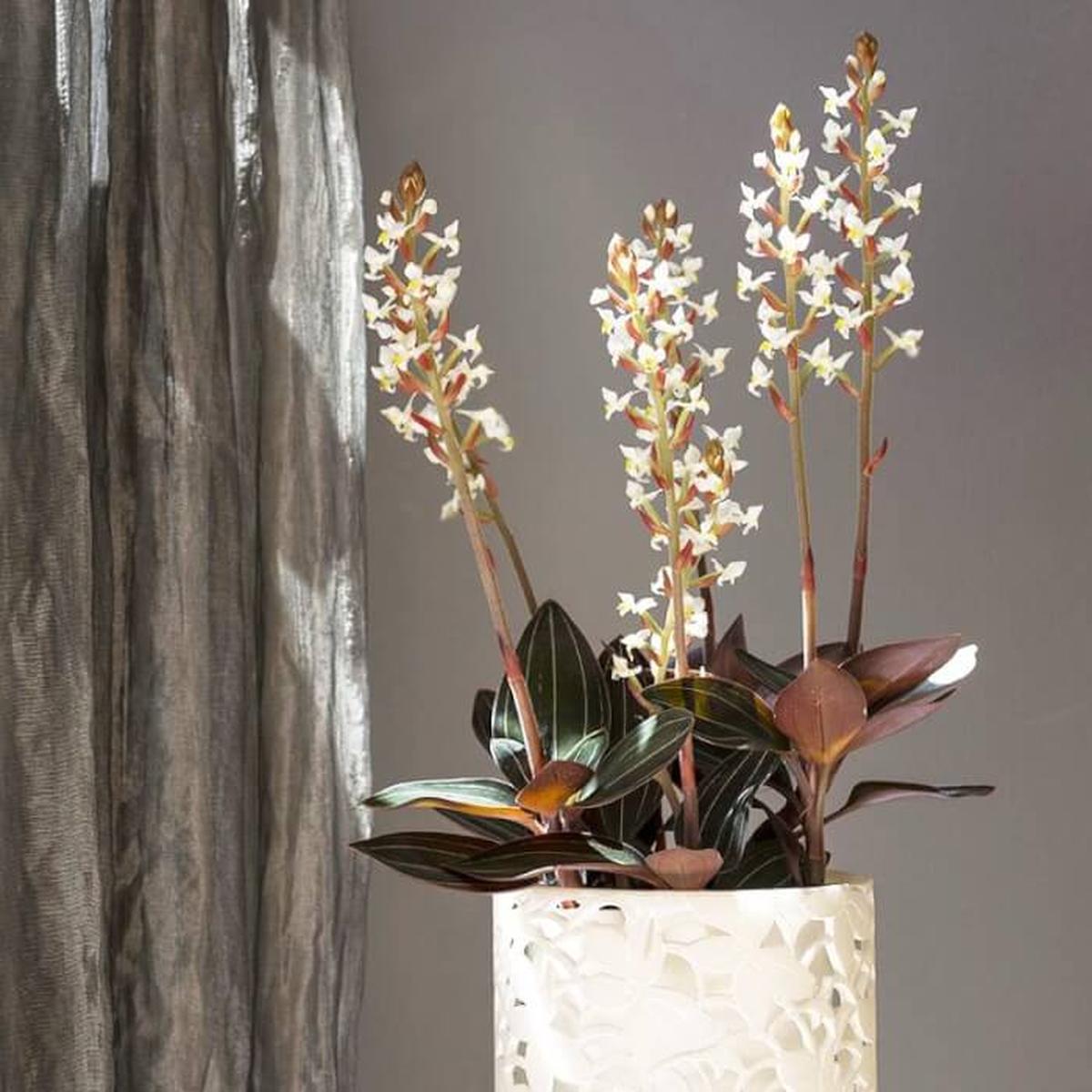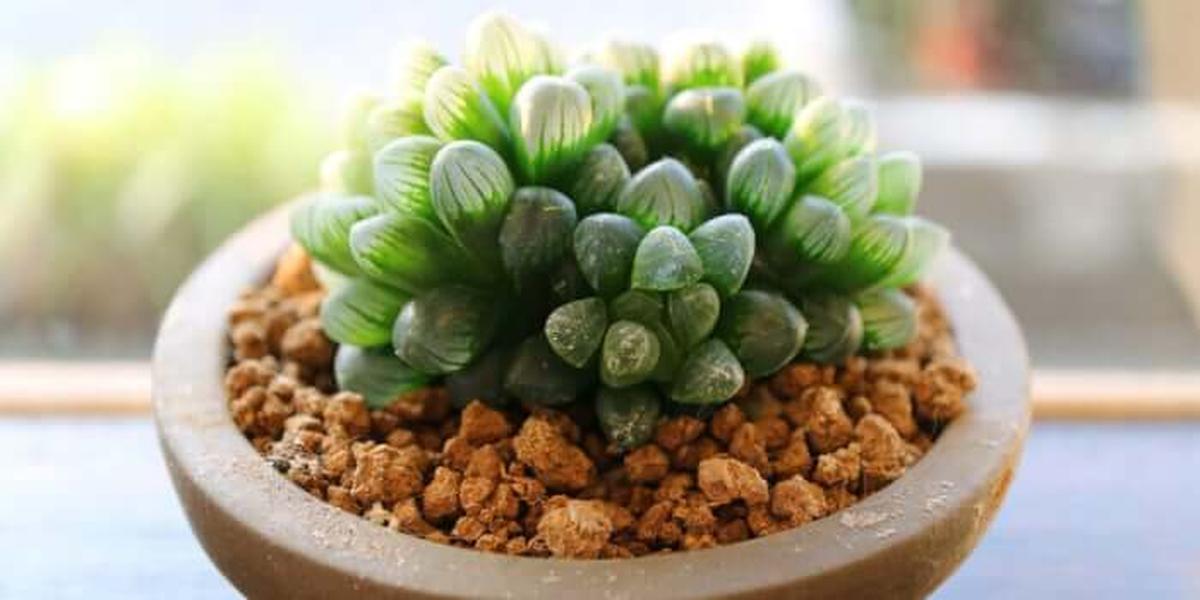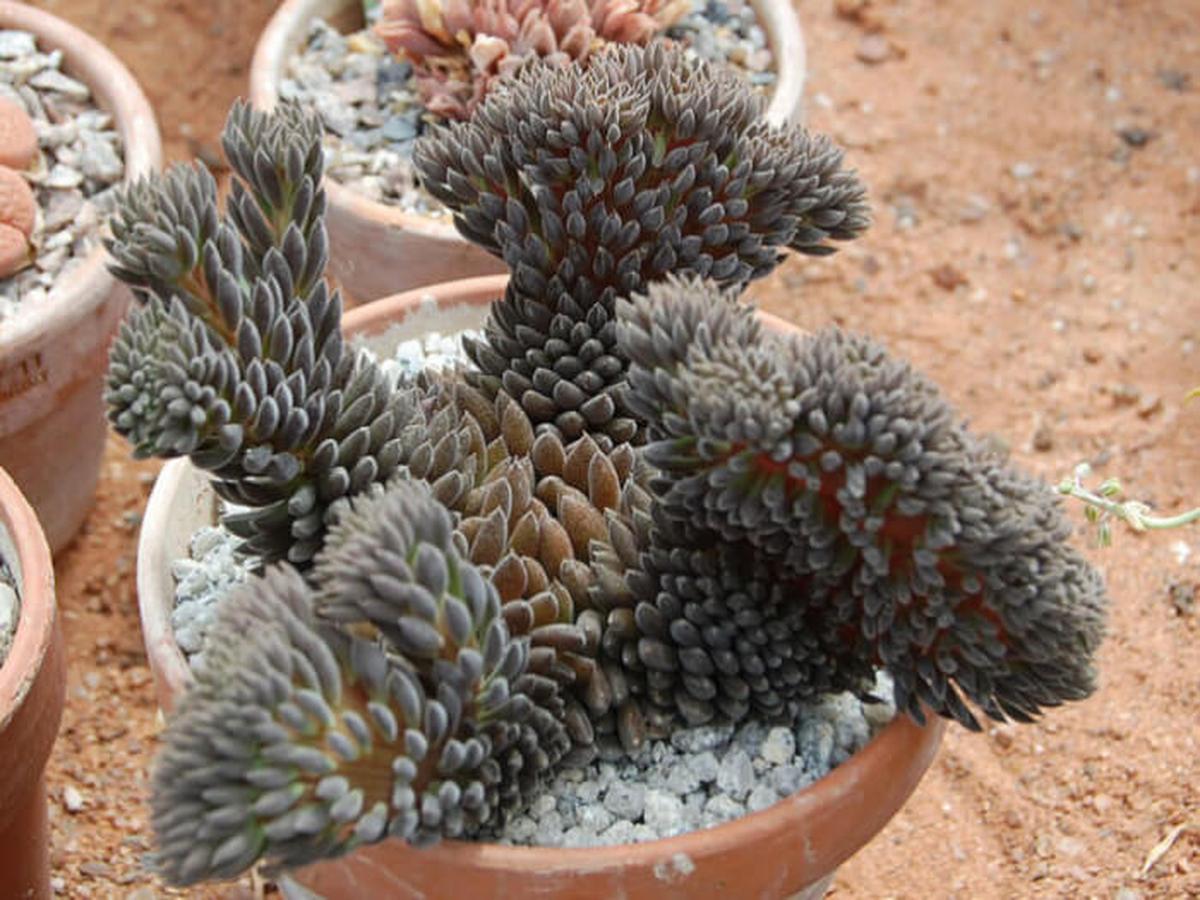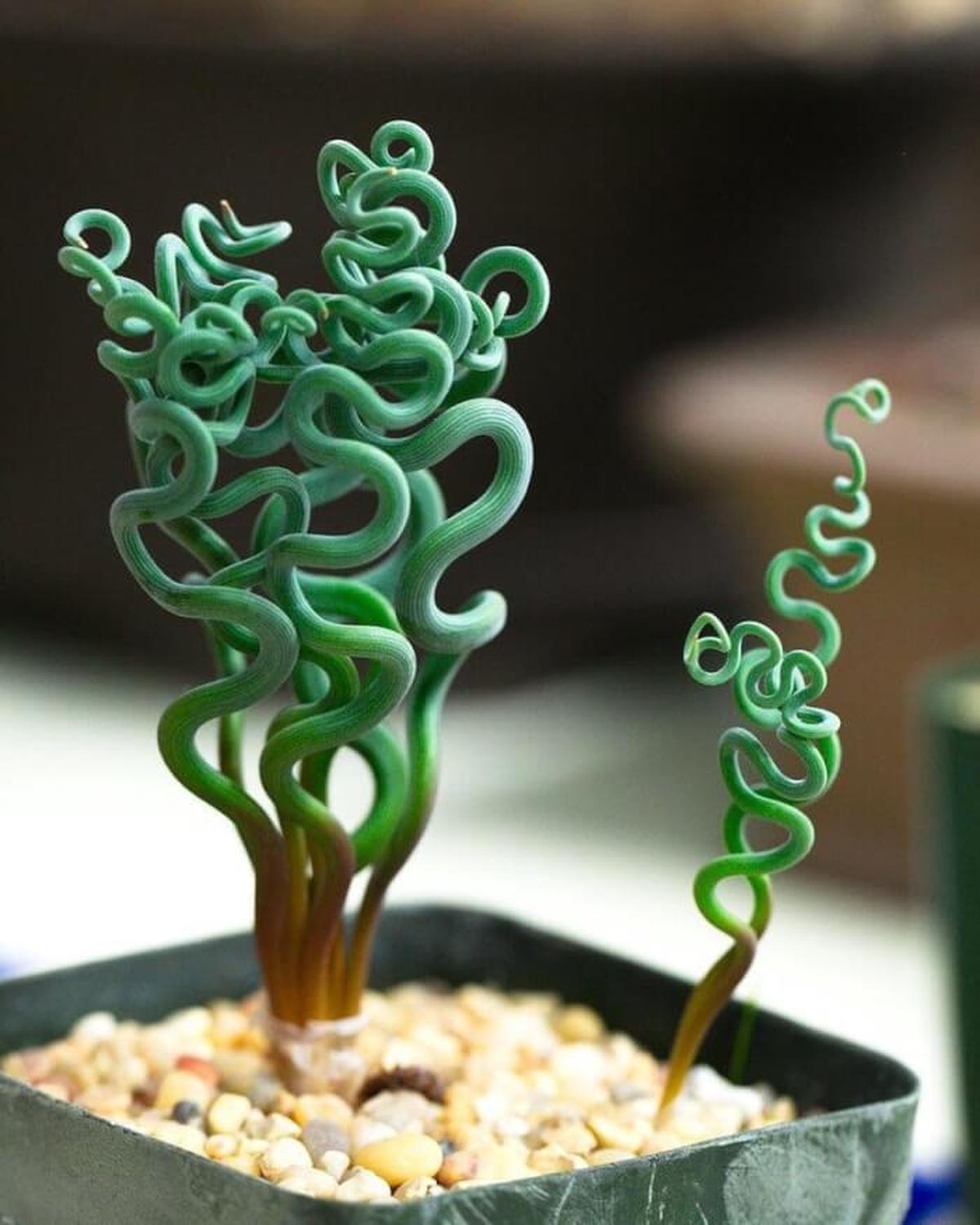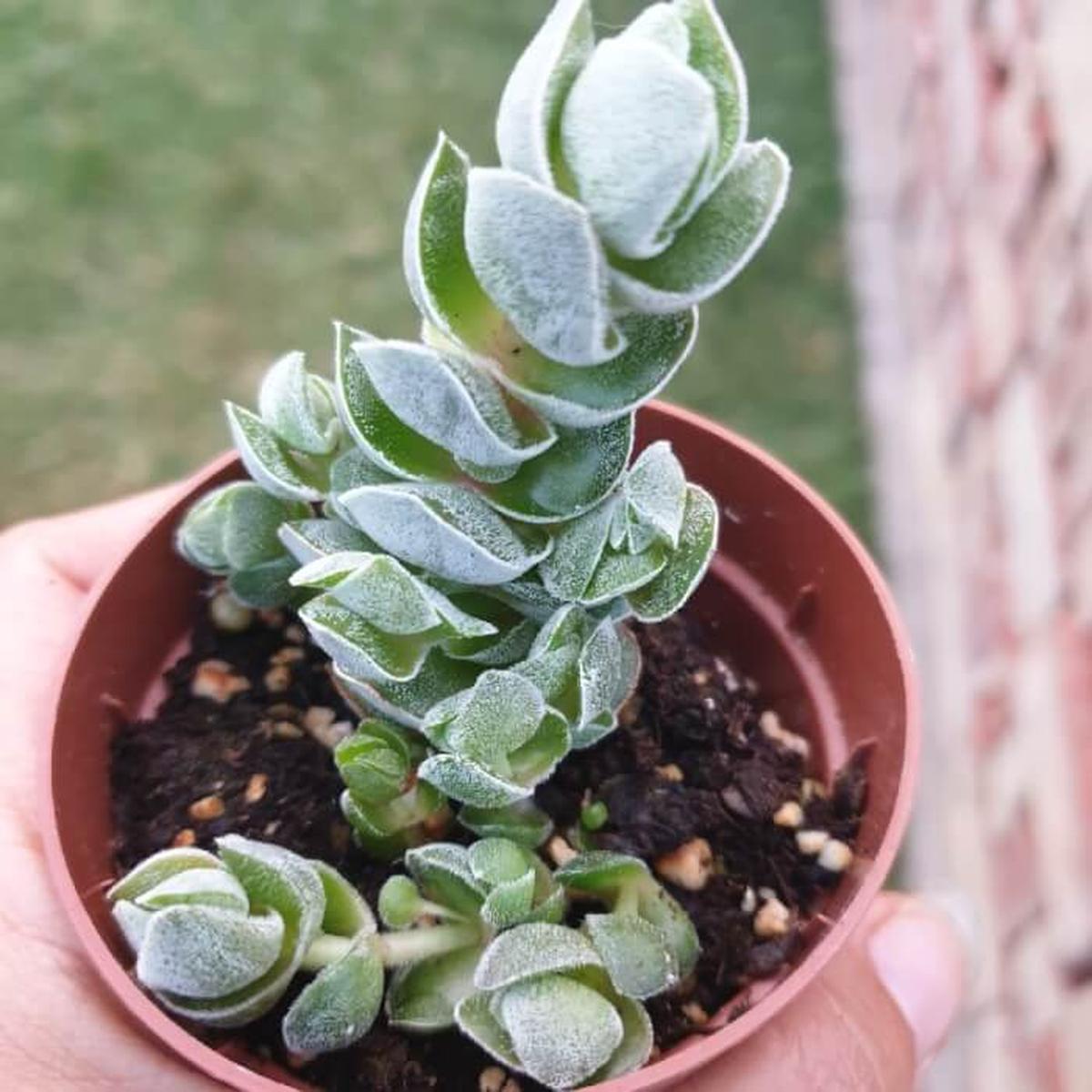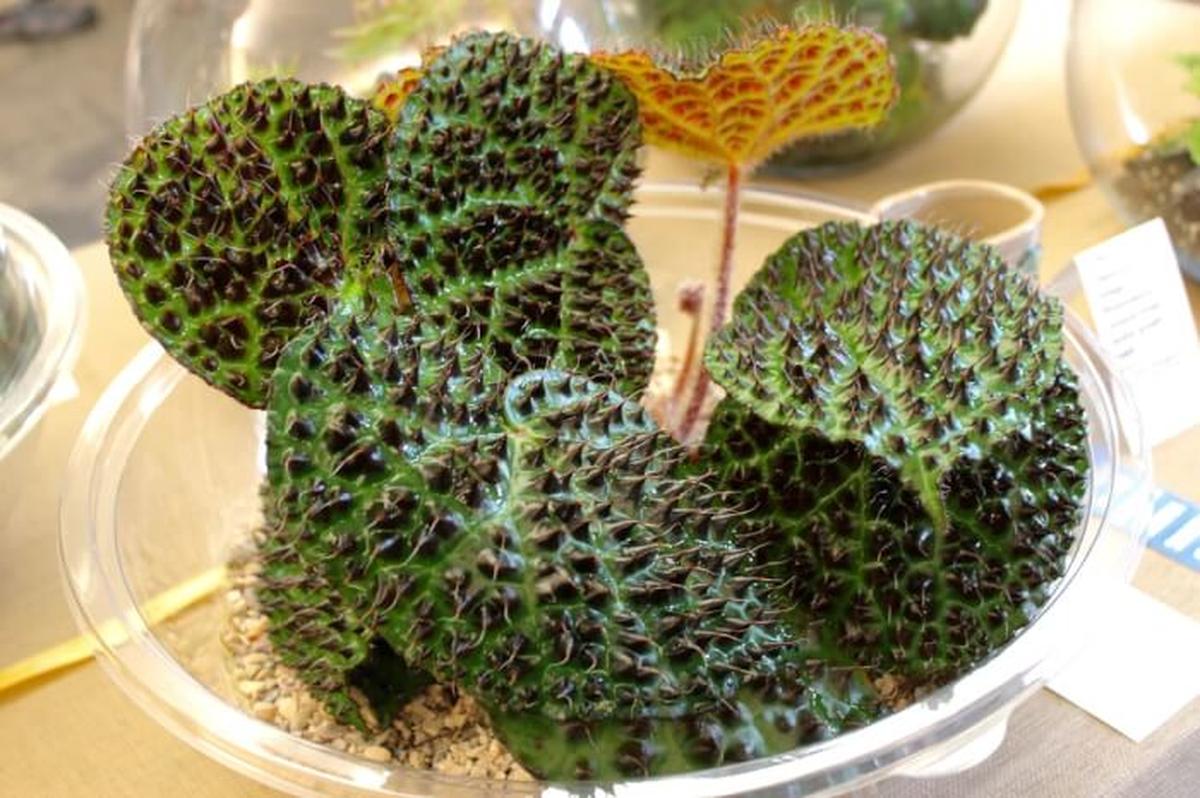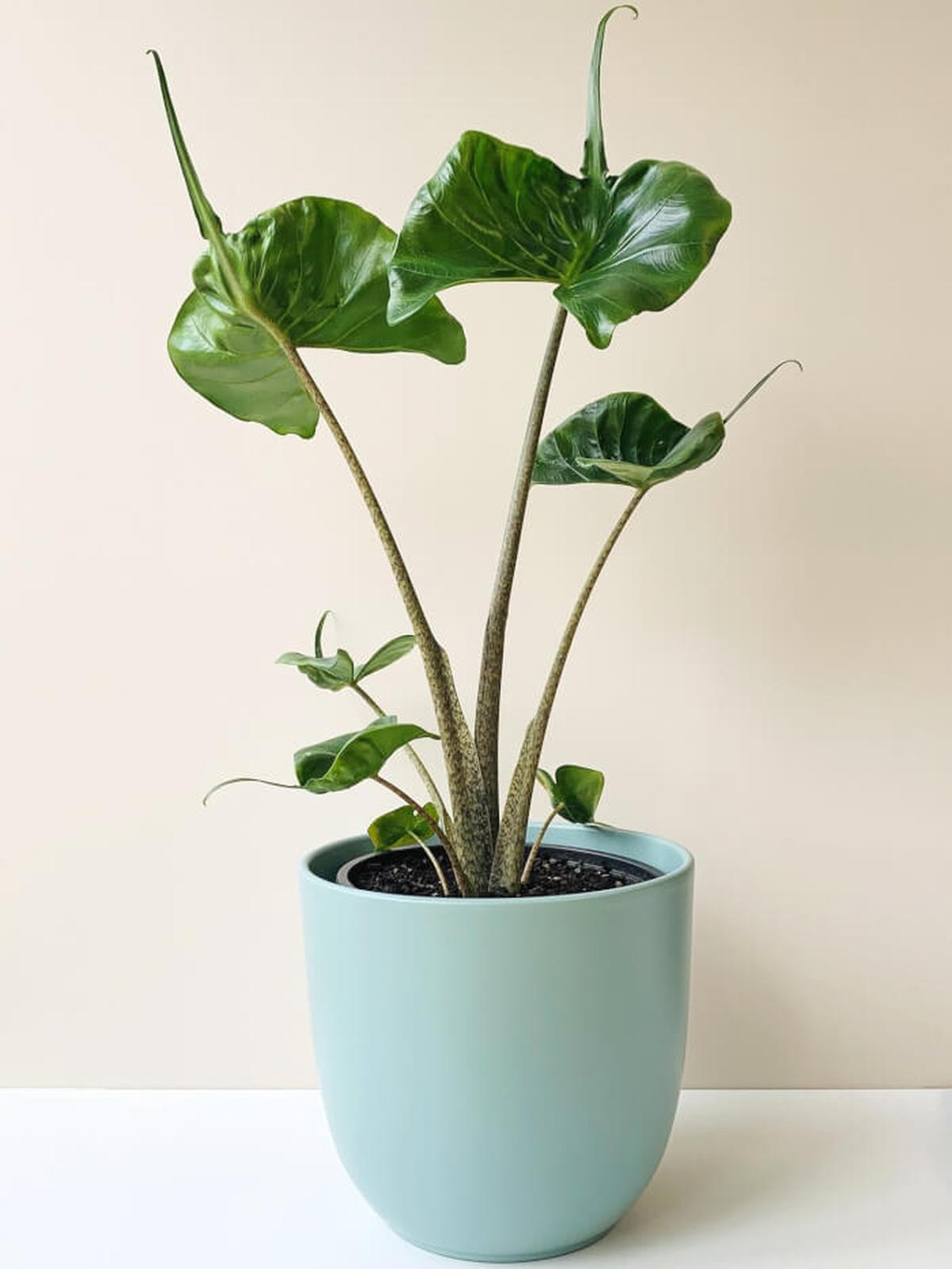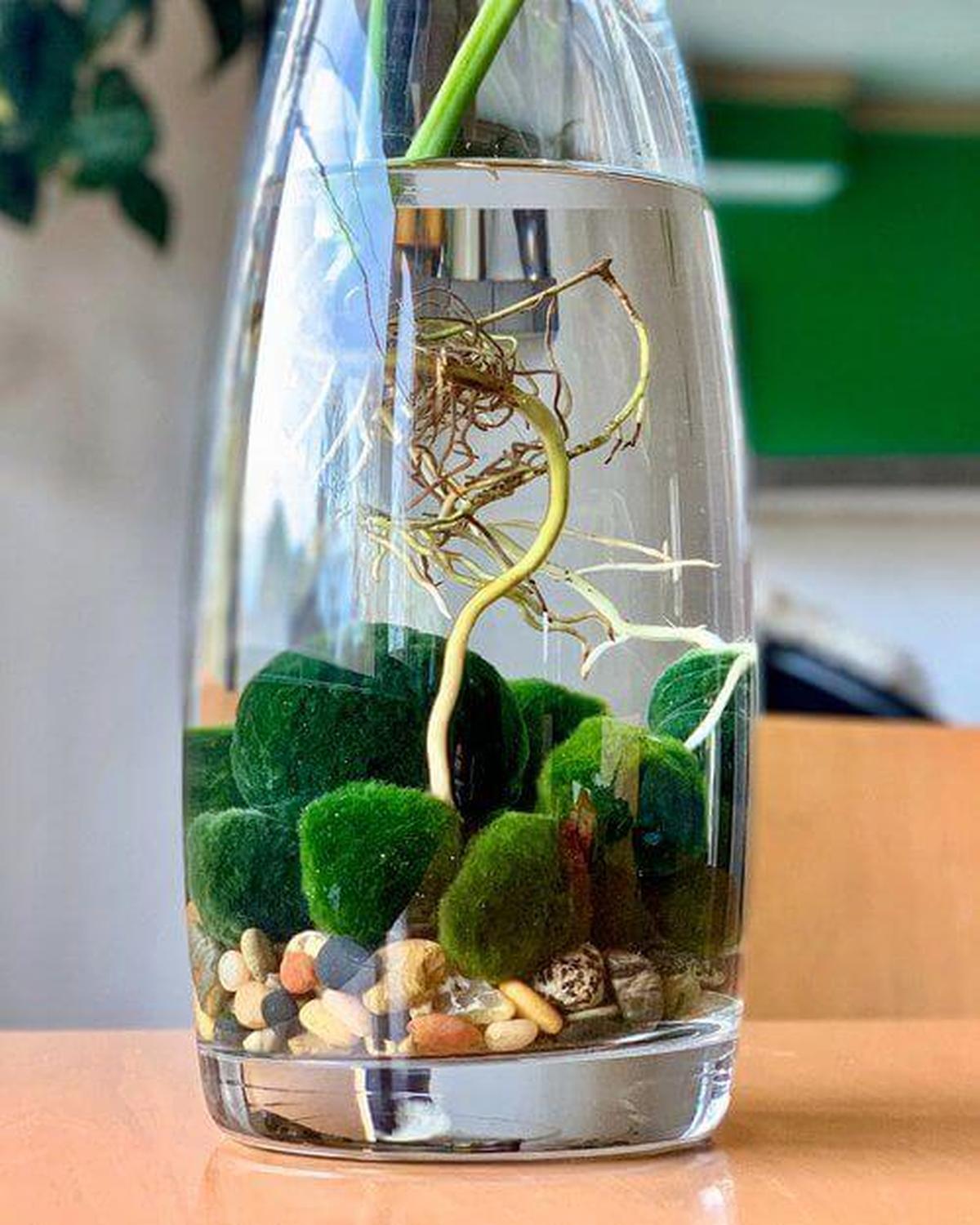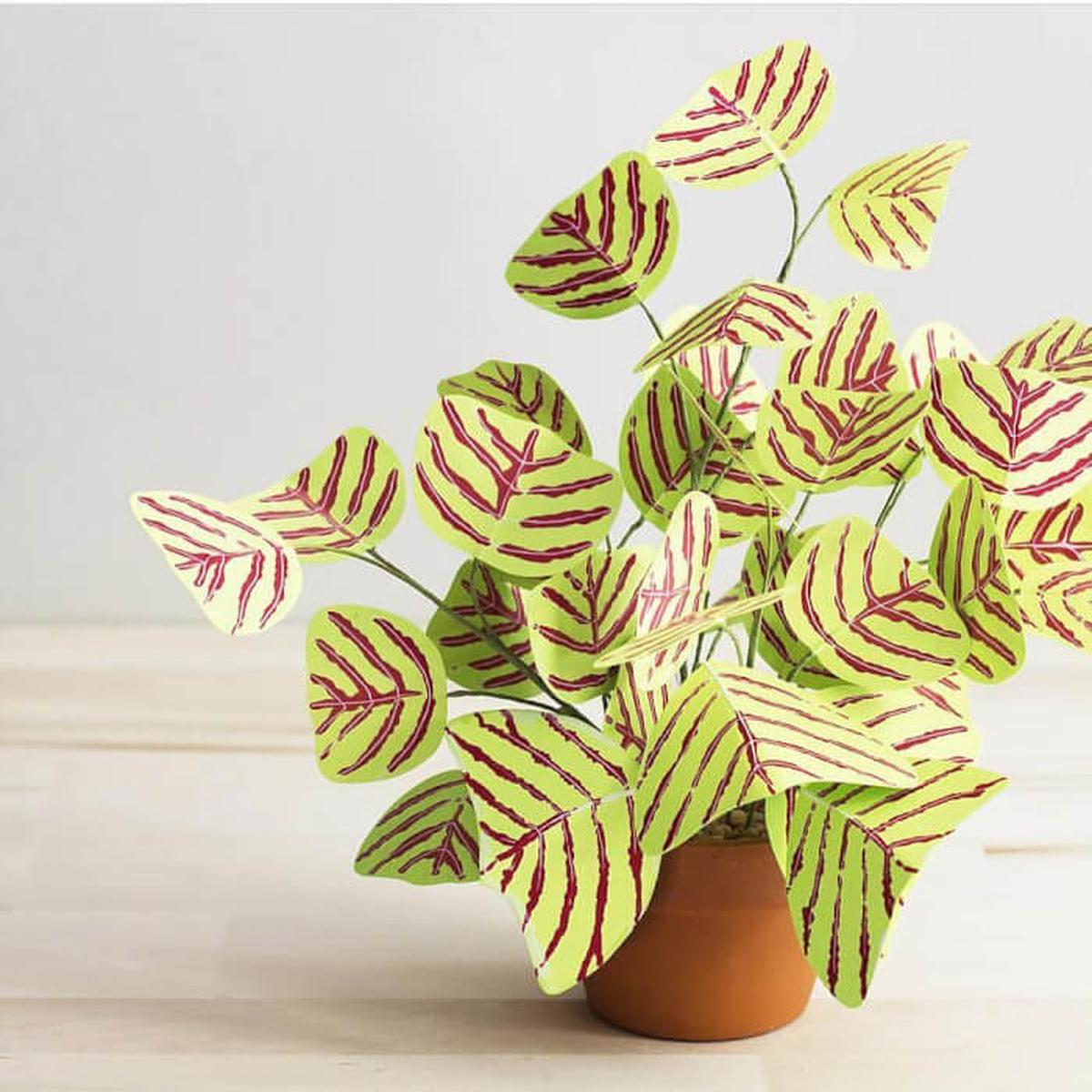26 Exotic Leaf Houseplants for Dramatic Flair
Houseplant types with exotic leaves bring a touch of the extraordinary indoors, transforming rooms into lush, tropical escapes. Each plant showcases unique patterns, textures, or colors, adding personality and flair to home décor.
Many varieties thrive with moderate care, making it easy to enjoy their bold presence without complex upkeep. These plants are perfect for creating statement pieces, adding vibrancy and depth to interior spaces.
Their unusual leaves make them a conversation starter and a beautiful addition to any room. Here’s a list of 26 exotic houseplants to bring nature’s artistry inside.
Corkscrew Rush (Juncus effusus Spiralis)
Corkscrew rush, scientifically known as juncus effusus spiralis, thrives effortlessly indoors. With its distinctive coiled stems twisting in various directions, this plant adds an intriguing visual element to any space.
It flourishes best when placed near a bright window and requires consistently moist soil for optimal growth. Enjoy the unique beauty of corkscrew rush while benefiting from its low-maintenance nature; it’s perfect even for those without a green thumb.
You can create a lively atmosphere at home with this fascinating addition that captures attention and sparks interest among visitors.
Seersucker Plant (Geogenanthus poeppigii)
The seersucker plant, scientifically known as geogenanthus poeppigii, features distinctive leaves with a unique puckered texture. Thriving in indirect sunlight makes it an excellent choice for indoor spaces where bright light is limited.
This intriguing foliage adds depth and character to any collection of houseplants. You can appreciate its unusual appearance while enjoying the ease of care that this species offers.
With its captivating look, you’ll find it enhances your green sanctuary effortlessly.
Wine Cup (Crassula Umbella Wine Cup)
The wine cup, known scientifically as crassula umbella, is a remarkable succulent that adds charm to any space. Its unique structure features unbranched stems adorned with glossy round leaves, each exhibiting raised edges reminiscent of an elegant wine glass.
This plant thrives effortlessly and flourishes with minimal watering, making it perfect for both beginners and seasoned gardeners alike. With its striking appearance and low maintenance needs, you can easily enjoy the beauty this succulent brings to your home or garden environment.
It truly stands out among houseplants!
Heart Leaf Fern (Hemionitis arifolia)
The heart leaf fern, known scientifically as Hemionitis arifolia, boasts unique foliage resembling slightly elongated hearts. This plant thrives in high humidity environments and flourishes best when placed in areas with indirect sunlight.
Its striking leaves not only add a touch of nature to your space but also create a lush atmosphere that enhances any room's appeal. Caring for this fern is relatively straightforward, making it an excellent choice for both novice and experienced plant enthusiasts alike.
Providing the right conditions will ensure its vibrant growth year-round.
Barbillion Echeveria (Echeveria gibbiflora Barbillion)
Barbillion Echeveria, known scientifically as Echeveria gibbiflora Barbillion, boasts unique leaves that transform in both color and form across the seasons. These fascinating succulents thrive best with partial sunlight exposure, making them a perfect addition to various indoor or outdoor spaces.
The rich texture of their densely carunculated foliage adds visual interest and character to any collection. Caring for this plant can be rewarding as you witness its dynamic changes throughout the year.
With proper attention, it can become a stunning focal point in your home or garden landscape.
Leopard Plant (Farfugium japonicum)
The leopard plant, scientifically known as farfugium japonicum, showcases stunning large round leaves adorned with attractive speckles. For optimal growth, you should place it in a spot that receives direct morning sunlight.
Its unique foliage not only enhances the beauty of your space but also brings an intriguing texture to any garden or indoor setting. Regular exposure to light helps maintain its vibrant appearance and overall health.
Cultivating this remarkable plant will surely add a refreshing touch to your surroundings while being easy to care for.
Spiralis Cactus (Cereus forbesii Spiralis)
The spiralis cactus, known scientifically as cereus forbesii spiralis, features stunning blue-green stems that twist in a unique spiral pattern reminiscent of candelabra.
Initially thriving in light shade during its early growth stages, this intriguing plant later demands bright light to flourish throughout the year.
Its striking form adds an eye-catching element to any collection and is sure to draw attention from those who appreciate distinctive flora.
Offering low maintenance yet impressive beauty, it makes a fantastic choice for both novice and seasoned plant enthusiasts seeking something extraordinary.
Spotted Begonia (Begonia amphioxus)
The spotted begonia, known scientifically as begonia amphioxus, stands out for its striking appearance. With glossy green leaves adorned with crimson spots and rippled edges resembling butterfly wings, this tropical plant is truly remarkable.
Cultivating it requires a focus on rich, well-draining soil combined with bright yet indirect sunlight to thrive. Its unique foliage adds an exotic touch to any indoor garden or space you wish to enhance.
As a rare gem in the world of houseplants, owning one can be both rewarding and visually appealing.
Jellyfish Air Plant (Tillandsia)
The jellyfish air plant, known as tillandsia, offers a unique visual appeal reminiscent of floating jellyfish when displayed upside down in sea urchin shells.
This intriguing plant thrives without soil and requires minimal care, making it an ideal choice for those who appreciate effortless greenery.
Its distinctive shape adds a whimsical touch to any space while allowing for creative arrangements.
You can easily incorporate this fascinating specimen into your decor for an eye-catching effect that sparks curiosity among guests.
Ant Plant (Dischidia pectinoides)
The ant plant, scientifically known as Dischidia pectinoides, features unique bullate leaves that possess hollow pockets.
These structures are intriguing and serve a specific purpose in the plant's ecosystem.
To ensure its health, keep it out of direct sunlight and maintain a careful watering routine to prevent overwatering.
This fascinating species adds character to any collection with its distinct form and care requirements.
Babys Necklace (Crassula rupestris)
Babys necklace, scientifically known as crassula rupestris, features striking round leaves that are gray-green with vibrant red edges.
These unique leaves create a stunning visual akin to a beaded necklace when stacked closely together.
For optimal growth, it's crucial to plant this succulent in gritty soil that drains well and ensure you water it thoroughly only when the top layer of soil feels dry.
This care routine will help maintain its health and beauty over time.
Striped Begonia (Begonia listada)
The striped begonia, known scientifically as begonia listada, features stunning green and cream stripes that resemble precious gems. This eye-catching plant thrives in indirect light, making it an excellent choice for bright indoor spaces where sunlight is filtered.
Its unique leaf patterns not only add charm but also create a striking visual appeal to any collection of houseplants. When you care for this beauty properly, its vibrant foliage can enhance the atmosphere of your living area significantly.
Keep it away from harsh rays to maintain its exquisite appearance and health.
Venus Flytrap (Dionaea muscipula)
The Venus flytrap, a fascinating carnivorous plant known scientifically as Dionaea muscipula, attracts insects with its sweet nectar.
When unsuspecting bugs come close, the bristly leaves snap shut in an impressive display of nature's design.
This remarkable plant thrives best in warm environments while requiring careful attention to sunlight exposure; too much direct light can be harmful.
Its unique structure features two hinged lobes adorned with thorny edges that ensure successful capture of prey.
Crinkle Leaf Plant (Adromischus cristatus)
The crinkle leaf plant, scientifically known as adromischus cristatus, features uniquely shaped fleshy leaves that resemble triangles.
These leaves are adorned with tiny hairs and boast wavy edges, making them visually interesting.
Thriving in environments ranging from full sunlight to partial shade allows this resilient plant to adapt easily to various settings.
Its distinct texture adds a refreshing element to any collection of greenery.
Parachute Plant (Ceropegia Sandersonii)
The parachute plant, known as ceropegia sandersonii, features distinctive twining stems adorned with unusual light green leaves marked by unique dot patterns. For optimal growth, it's essential to cultivate this fascinating specimen in gritty compost within clay pots that have drainage holes.
This arrangement ensures proper moisture levels while allowing the roots to thrive without becoming waterlogged. The striking appearance of the foliage adds an intriguing element to any indoor or outdoor space you choose for it.
Caring for this plant not only enhances your collection but also invites curiosity from all who encounter its remarkable design.
Hurricane Cactus (Lepismium cruciforme)
The hurricane cactus, known scientifically as Lepismium cruciforme, features striking spiraled stems adorned with glossy green foliage arranged in a circular pattern.
This unique plant thrives best in partial shade and requires moderate watering to flourish.
Its distinctive appearance adds an intriguing element to any space, making it a fantastic choice for those looking to incorporate something special into their collection.
With its fascinating growth habit and low maintenance needs, this cactus is sure to impress anyone who encounters it.
Starfish Cactus (Stapelia grandiflora)
The starfish cactus, known scientifically as stapelia grandiflora, features striking flowers shaped like stars that beautifully contrast with its layered leaves. To cultivate this unique plant successfully, you should provide a soil mix that is gritty and drains well; combining perlite or vermiculite works wonders for optimal growth.
This fascinating succulent not only adds character to your space but also thrives in conditions that mimic its native habitat. When caring for it, remember the importance of light and watering practices tailored to prevent over-saturation.
You’ll find joy in nurturing such an extraordinary addition to your collection.
Jewel Orchid (Macodes petola)
The jewel orchid stands out with its striking green leaves adorned by intricate golden veins.
Thriving in warm and humid environments, this plant requires careful attention to maintain its ideal conditions.
Its unique appearance not only adds beauty but also sparks curiosity among plant enthusiasts.
Cultivating it can be rewarding, as you witness the exceptional patterns that emerge on each leaf over time.
Cooperi Haworthia (Haworthia cooperi)
The cooperi haworthia showcases a unique appearance with its round, translucent green leaves resembling tiny bubbles.
Providing it with 4 to 5 hours of bright morning light ensures optimal growth and health.
This succulent thrives in sunny spots, making it an excellent choice for those looking to add greenery indoors or outdoors.
Its fleshy texture not only captivates the eye but also contributes to its resilience as a low-maintenance plant.
Chinese Jade (Sinocrassula yunnanensis f. cristata)
Chinese jade, scientifically known as sinocrassula yunnanensis f. cristata, is remarkable for its unique fan-like structure.
This succulent thrives best with minimal moisture, making it ideal for those who prefer low-maintenance plants. You will appreciate how this variety adds an intriguing visual element to your collection while requiring little care.
Place it in a well-draining potting mix and enjoy the beauty of its distinctive form without the hassle of frequent watering. Its resilient nature makes it perfect for both beginners and seasoned plant enthusiasts alike.
Trachyandra (Trachyandra)
Trachyandra is a fascinating plant known for its unique spiral leaves that have a fleshy texture. These small, shrub-like features give it an intriguing appearance, often enhanced by fine hairs covering the foliage.
Thriving in well-draining soil is crucial for its growth and overall health. If you’re looking to add an unusual touch to your garden or indoor space, this resilient species could be just what you need.
Its springy nature makes it stand out among other plants while requiring minimal maintenance from you.
Pangolin (Crassula Pangolin)
The crassula pangolin features leaves that mimic the unique shape of the animal it is named after.
This succulent stands out with its tough, overlapping scales, reminiscent of a pangolin's protective armor.
Found in arid regions, this plant thrives on minimal water and showcases resilience against harsh conditions.
Its intriguing appearance adds an exotic touch to any collection or garden setting.
Vietnam Ferox (Begonia melanobullata)
Vietnam Ferox, also known as Begonia melanobullata, features unique foliage that resembles jagged teeth with its striking black cone-like structures. The wavy and hairy edges of the leaves add to its distinctive appearance.
This plant thrives in environments offering both full and partial shade, making it an excellent choice for shaded gardens or indoor spaces. Its unusual texture not only intrigues plant enthusiasts but also enhances any collection with a bold statement piece.
If you're looking to diversify your greenery, this exotic begonia stands out for its captivating design.
Alocasia Stingray (Alocasia macrorrhiza Stingray)
The alocasia stingray, known scientifically as Alocasia macrorrhiza Stingray, features leaves that mimic the unique shape of a stingray with its tail and wings.
To keep this plant healthy, it's crucial to shield it from harsh sunlight or excessive heat which can scorch its foliage.
It flourishes best in indirect light and requires a soil mix that drains well to prevent root rot.
This striking plant adds an exotic touch to your space while being relatively low-maintenance when given the right conditions.
Marimo Moss Ball (Aegagropila linnaei)
Marimo Moss Ball, scientifically known as Aegagropila linnaei, is an intriguing aquatic plant that resembles a soft green ball rather than traditional moss.
This fascinating algae thrives in freshwater and can add an unusual touch to your home or aquarium.
When caring for it, tap water works well; if you notice brown spots on the surface, simply mix in a small amount of ocean salt to rejuvenate its health.
These spheres are non-invasive and require minimal maintenance while providing a unique aesthetic appeal to any environment.
Butterfly Wing Plant (Christia obcordata)
The butterfly wing plant, scientifically known as Christia obcordata, delights with its unique triangular green leaves that resemble butterflies in flight.
Each leaf features intricate burgundy markings, adding an artistic touch to your space.
Thriving in warm indoor environments, this plant is perfect for enhancing cozy corners or brightening up a room.
It not only adds visual interest but also serves as a conversation piece among guests drawn to its unusual appearance.

